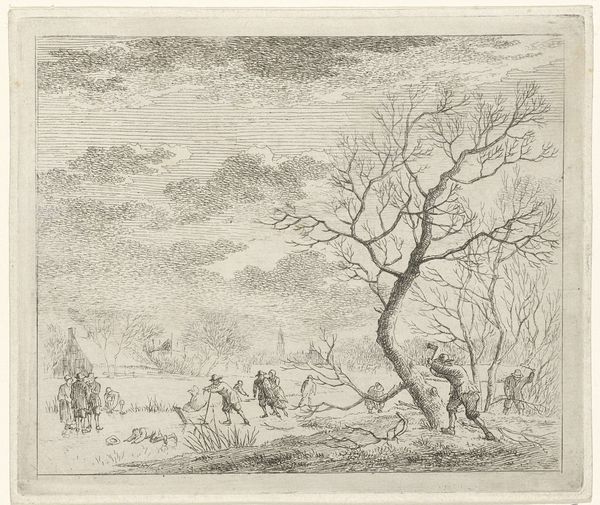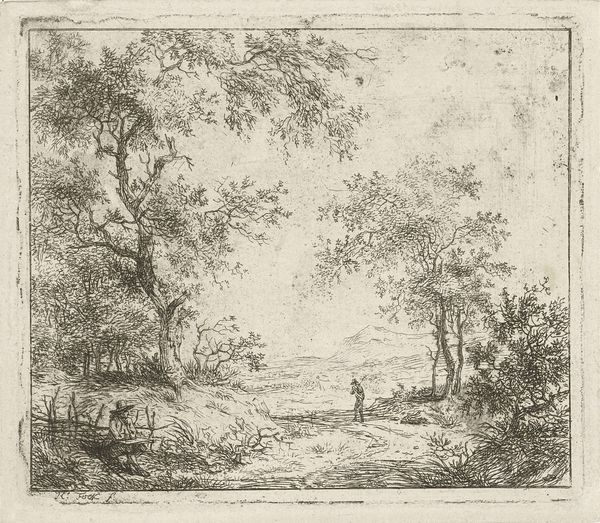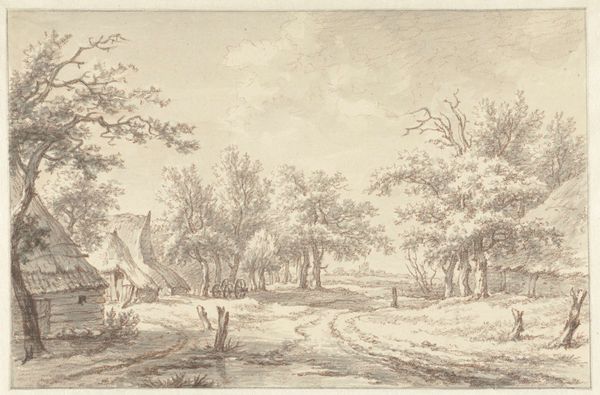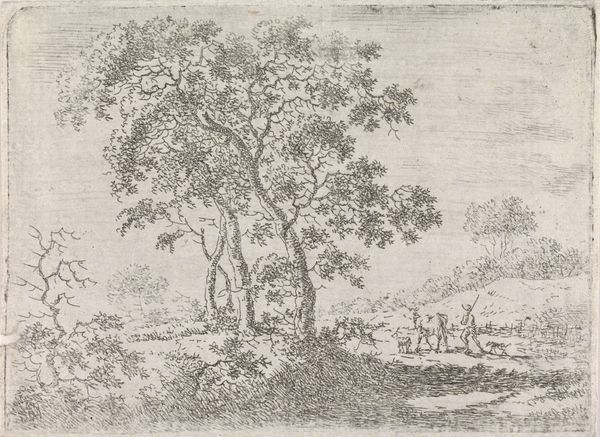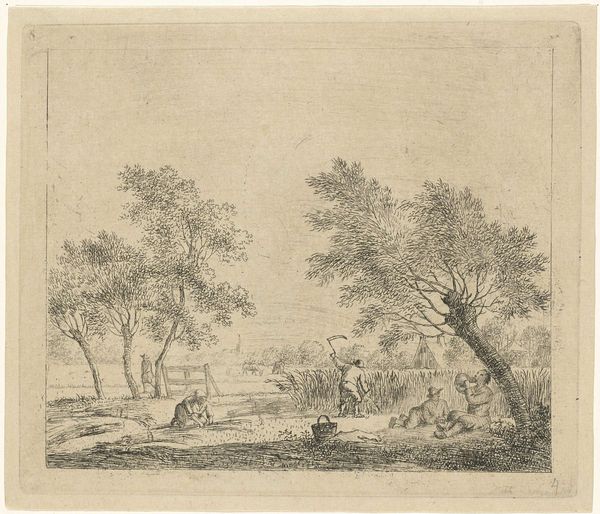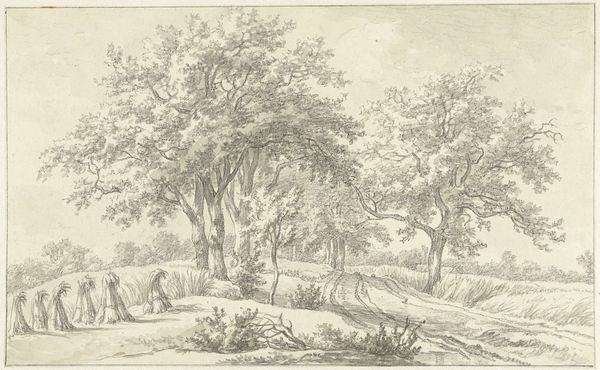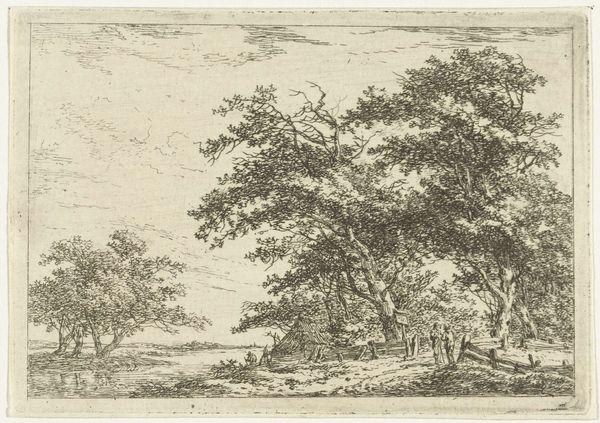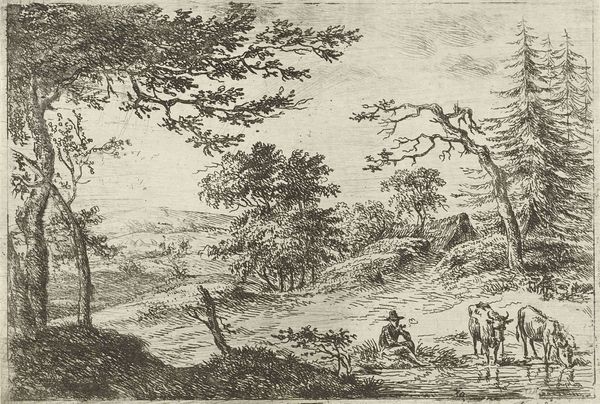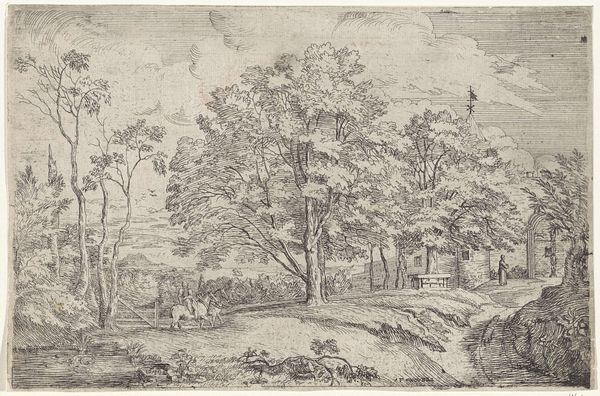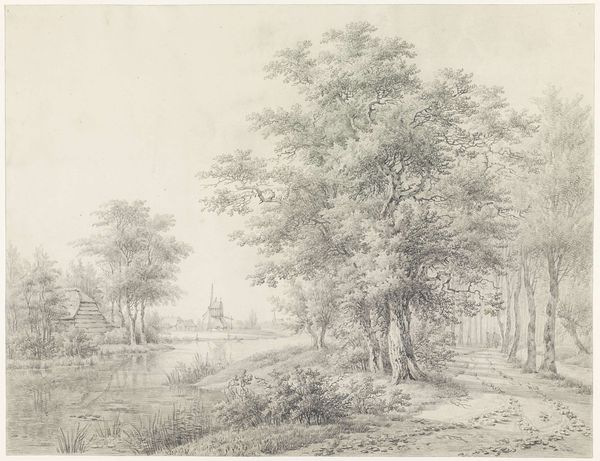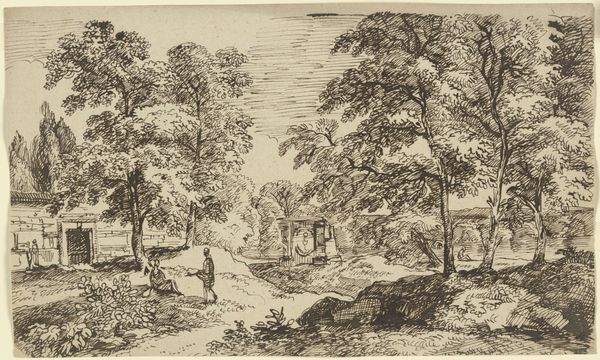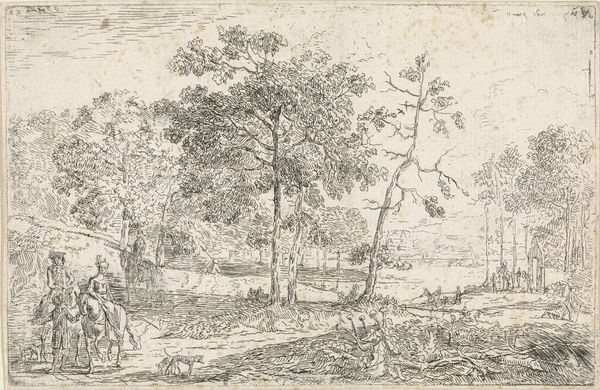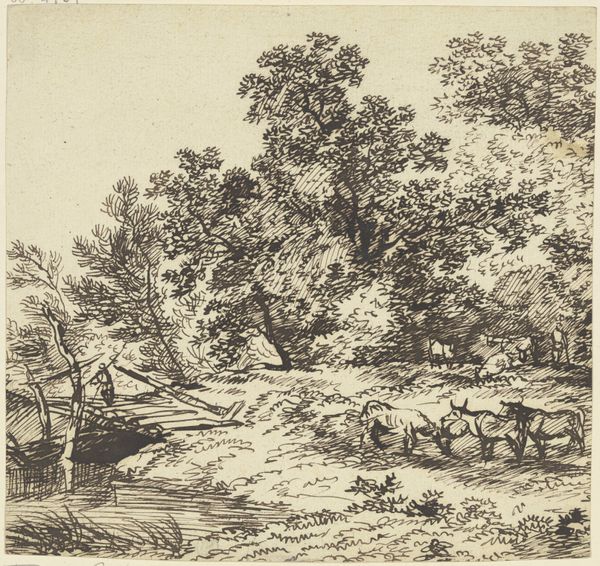
drawing, pencil
#
drawing
#
landscape
#
romanticism
#
pencil
Dimensions: height 364 mm, width 430 mm
Copyright: Rijks Museum: Open Domain
Editor: This drawing, “Noord-Hollands landschap (Egmond richting Castricum?)” attributed to Pieter Pietersz. Barbiers, made somewhere between 1759 and 1842, is beautifully rendered with just pencil. The landscape seems so peaceful, almost idyllic. What stands out to you in this piece? Curator: I’m drawn to the material reality within this seemingly romantic scene. The pencil, a readily available tool, allowed for a democratic depiction of labor. Consider the figures: some resting, perhaps laborers pausing in their work. How does the landscape itself reflect human intervention and modification through resource use? Editor: That’s interesting! I was focusing more on the composition, with the figures framed by the trees, drawing your eye to the distant church. I hadn’t considered the social implications of pencil as a medium. Curator: Precisely. And let's analyze the landscape: note the domesticated farm animals, harvested and managed forestry. The pencil strokes meticulously depict not just an untouched 'nature,' but a space shaped by human labor, economies, and access to resource management. Editor: So you’re saying the medium itself allows us to see the representation of resources being used by people. How does this relate to challenging the traditional hierarchy between art and craft? Curator: Traditional 'high art,' like oil painting, was often patronized and depicted grand subjects or aristocratic figures. A humble pencil drawing brings attention to those who till the land and depend on natural resources to live and maintain the growing culture. Editor: I never thought about landscape art in this light. Curator: Examining Barbiers’s work this way reveals how art-making itself can engage with the politics of production and the representation of labor, regardless of artist intention. Editor: I see what you mean. It makes me wonder how we overlook all the layers of labor in art when it comes to display or collection, not just in the making of the art itself! Thank you for this interpretation. Curator: Absolutely. Approaching art from a materialist perspective offers profound insights into art and human life.
Comments
No comments
Be the first to comment and join the conversation on the ultimate creative platform.
